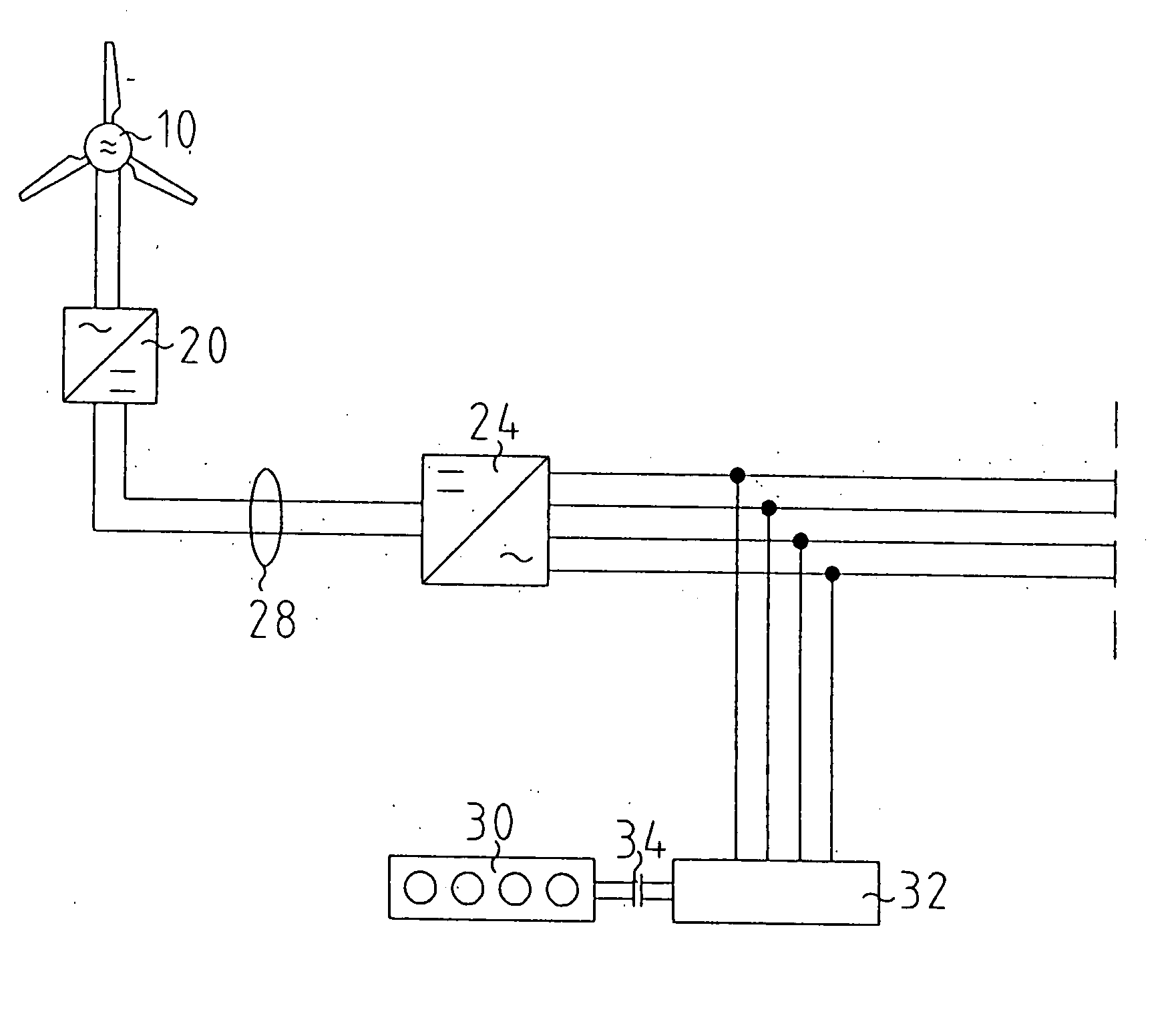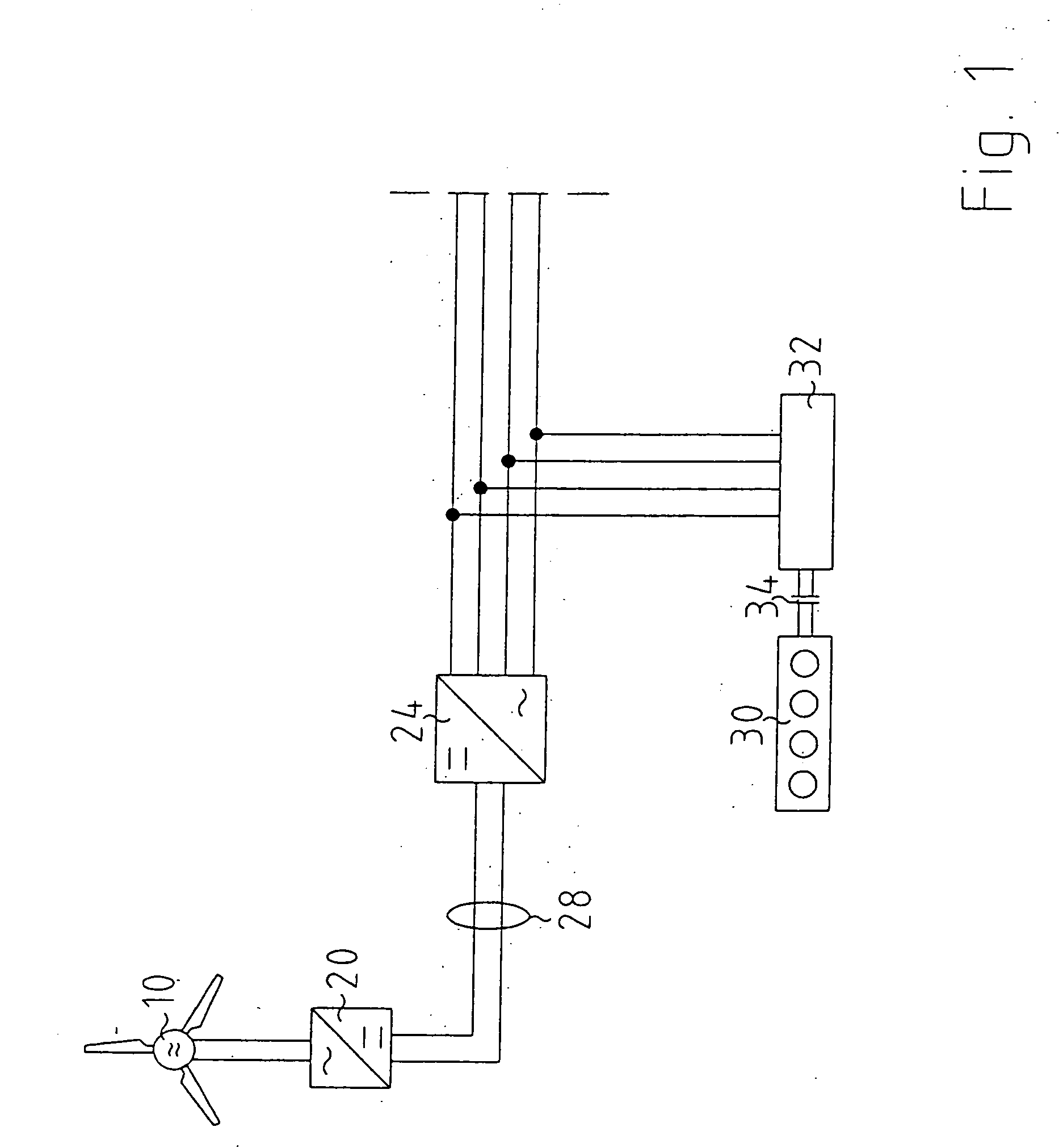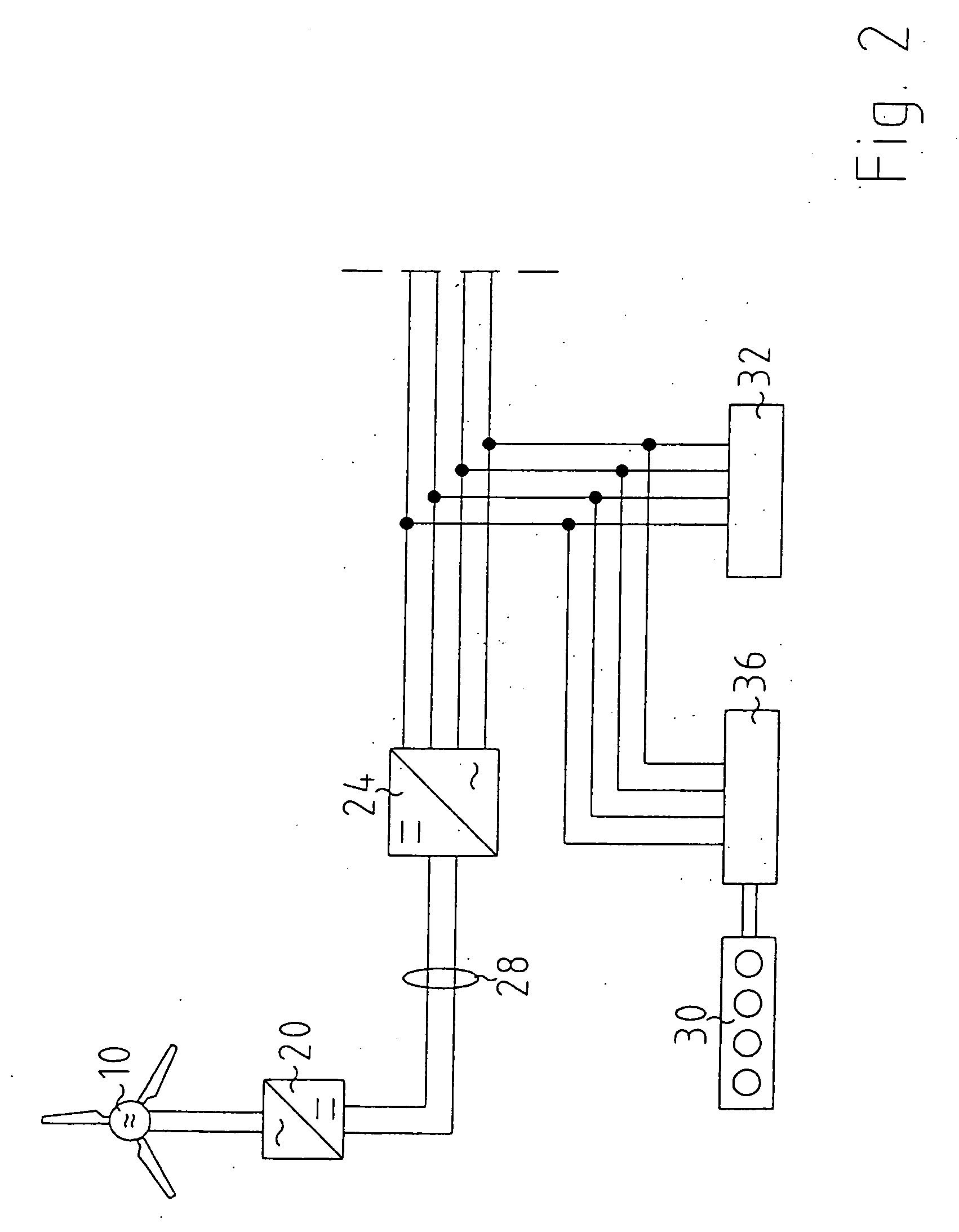Separate network and method for operating a separate network
a technology of separate networks and networks, applied in the direction of dynamo-electric machines, generators/motors, sustainable buildings, etc., can solve the problems of mechanical damage to primary power generators, high technical cost of self-commutated inverters, and relatively strict limit values, etc., to improve the efficiency of an island network
- Summary
- Abstract
- Description
- Claims
- Application Information
AI Technical Summary
Benefits of technology
Problems solved by technology
Method used
Image
Examples
Embodiment Construction
[0025]FIG. 1 shows a wind-power station with a downstream converter consisting of a rectifier 20, by means of which the wind-power station is connected to a dc voltage intermediate circuit 28, as well as an inverter 24 connected to the output of the dc voltage intermediate circuit 28.
[0026] In parallel to the output of the inverter 24, a second synchronous generator 32 is connected, which is connected in turn via an electromagnetic coupling 34 to an internal combustion engine 30. The output lines of the inverter 24 and the second synchronous generator 32 provide the (not shown) load with the required energy.
[0027] In this way, the wind-power station 10 generates the power to be supplied to the load. The energy generated by the wind-power station 10 is rectified by the rectifier 20 and fed into the dc voltage intermediate circuit 28.
[0028] The inverter 24 generates an alternating voltage from the applied dc voltage and feeds it into the island network. Because the inverter 24 is e...
PUM
 Login to View More
Login to View More Abstract
Description
Claims
Application Information
 Login to View More
Login to View More - R&D
- Intellectual Property
- Life Sciences
- Materials
- Tech Scout
- Unparalleled Data Quality
- Higher Quality Content
- 60% Fewer Hallucinations
Browse by: Latest US Patents, China's latest patents, Technical Efficacy Thesaurus, Application Domain, Technology Topic, Popular Technical Reports.
© 2025 PatSnap. All rights reserved.Legal|Privacy policy|Modern Slavery Act Transparency Statement|Sitemap|About US| Contact US: help@patsnap.com



